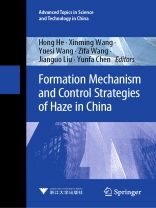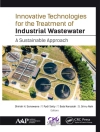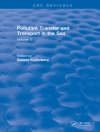This book summarizes the new major research findings about formation mechanism and control strategies of haze in China, including basic theories, key technologies, equipment and platforms and the applications and implementations of control technologies, in implementing the Strategic Priority Research Program (Class B) of Chinese Academy of Sciences. Different types of air pollution processes experienced by the developed countries in different stages are out-breaking simultaneously in China in the recent years and resulting a new type of “haze chemistry smog” pollution, which is different from the “London smog” and the “Los Angeles photochemical smog”. This book provides a useful reference for related researchers, engineers and policy-makers engaged in atmospheric pollution research, prevention and control in China and other countries.
Mục lục
Introduction.- Atmospheric oxidation and secondary particle formation.- Haze Source Tracing.- Numerical Model of Atmospheric Haze.- Research and Development, Industrialization, and Application of Advanced Instruments.- Multi-Pollutant Collaborative Treatment Technology and Special Equipment of Atmospheric Haze.
Giới thiệu về tác giả
Prof. Hong He received his doctorate (Ph.D.) at the University of Tokyo in 1994. He had studied and worked in Japan, the United States and Canada for 11 years and thereafter joined Research Center for Eco-Environmental Sciences (RCEES), Beijing, through the “Hundred Talents Program” of the Chinese Academy of Sciences (CAS) in 2001. His research has been mainly focusing on fundamental and applied research in environmental catalysis and heterogeneous atmospheric chemistry, with a series of achievements in areas of diesel emission control technologies, catalytic indoor air purification and haze formation mechanism. He is the author of more than 520 peer-reviewed scientific publications, with over 23, 100 citations. Prof. He is the first inventor of more than 60 patents, some of them already implemented. He was awarded the National Technology Invention Award (China, Second Class) in 2011, the National Science and Technology Progress Award (China, Second Class) in 2014, the National Natural Science Award (China, Second Class) in 2019, and the Ho Leung Ho Lee Foundation Prize for Scientific and Technological Innovation in 2017. He was elected as an academician of the Chinese Academy of Engineering in 2017.Prof. Xinming Wang received his Ph.D. in the State Key Laboratory of Organic Geochemistry (SKLOG) at the Guangzhou Institute of Geochemistry (GIG), CAS in 1997 and then joined GIG. He had stayed as a visiting scholar/professor in the Hong Kong Polytechnic University (1998-1999), University of California at Irvine (2000), Max Plank Institute for Chemistry (2006-2007) and CNRS (2010; 2015). He served as the deputy director of SKLOG since 2012. His expertise and interests are in understanding the fate of atmospheric organics by both field measurements and chamber simulations, including emission characterization, land-air exchange, atmospheric oxidation and formation of secondary products. He is the author of more than 300 peer-reviewed scientific publications, with over 20, 000 citations. Prof. Wang was awarded the National Natural Science Award (China, Second Class) in 2006 and the Guangdong Provincial Scientific and Technological Award (First Class) in 2013. He is an associate editor of
Journal of Geophysical Research-Atmospheres and
Atmospheric Environment.
Prof. Yuesi Wang received his doctorate (Ph.D.) at Institute of Atmospheric Physics, Chinese Academy of Sciences in 1998. He mainly engaged in the experimental observation and theoretical study of atmospheric chemistry and the environment, greenhouse gas emissions and global climate change. He was awarded the “National Science Funding for Distinguished Young scholars”, the “Hundred Talent Plan” of Chinese Academy of Sciences, and the “Government Special Allowance of the State Council”. Dr. Wang has published 500 SCI papers with more than 24, 000 citations, and has been authorized 20 national patents and promoted to more than 100 scientific research institutions or enterprises. He has been awarded “National Science and Technology Progress Award” three times (2/15, 2/10, 3/10). Until now, he had supervised and co-supervised more than 100 post-graduate students.
Dr Zifa Wang, Professor at the Institute of Atmospheric Physics, Chinese Academy of Sciences. Professor Wang is a world-renowned leader in the development of air quality models. He played an important role in the development of the CFORS (Chemical weather FORecasting System) model in Japan, and his NAQPMS (Nested Air Quality Prediction Modeling System) is widely used to predict air quality by Chinese government. He has published nearly 400 peer-reviewed publications, with over 19, 000 citations, has earned various prestigious awards, including the second-class State Science and Technology Progress Award.
Prof. Jianguo Liu received his doctorate (Ph.D.) at the Anhui Institute of Optics and Fine Mechanics, Chinese Academy of Sciences in 1999. He has always been engaged in new industrial researchon optical monitoring of environmental pollution and optical remote sensing monitoring technology. As project leader, he presided multiple national, provincial and municipal science and technology projects. He obtained Second Prize (4 items) of National Prize for Progress in Science and Technology, first Prize (1 items) of Environmental Protection Technology by The Ministry of Ecology and Environment, First Prize (5 items) for Science and Technology Award in Anhui Province. In 2012, he got prize of The 9th Excellent Environmentally Scientific and Technical Worker.
Prof. Yunfa Chen received his doctorate (Ph.D.) at the University of Louis-Pasteur Strasbourg I(France)in 1993. He joined Institute of Process Engineering, Chinese Academy of Sciences (CAS) after finishing the post-doctoral research at Institute for New Materials (Germany) before the end of 1994. His research has been mainly focusing on the preparation of porous functional structures, environmental purification materials, inorganic-organic nanocomposites and their engineering applications. Prof. Chen is co-author of more than 300 papers, 3 monographs and more than 100 patents with 70 granted. He won the second prize of the National Invention Award, three first prizes of local governments and professional organization. Prof. Chen serves as the professor of University of CAS, President of the Chinese Society of Particuology, co-editor of journal of Sol-Gel Science & Technology, editorial board member of the Particuology, KONA, Green Energy & Environment, etc.












